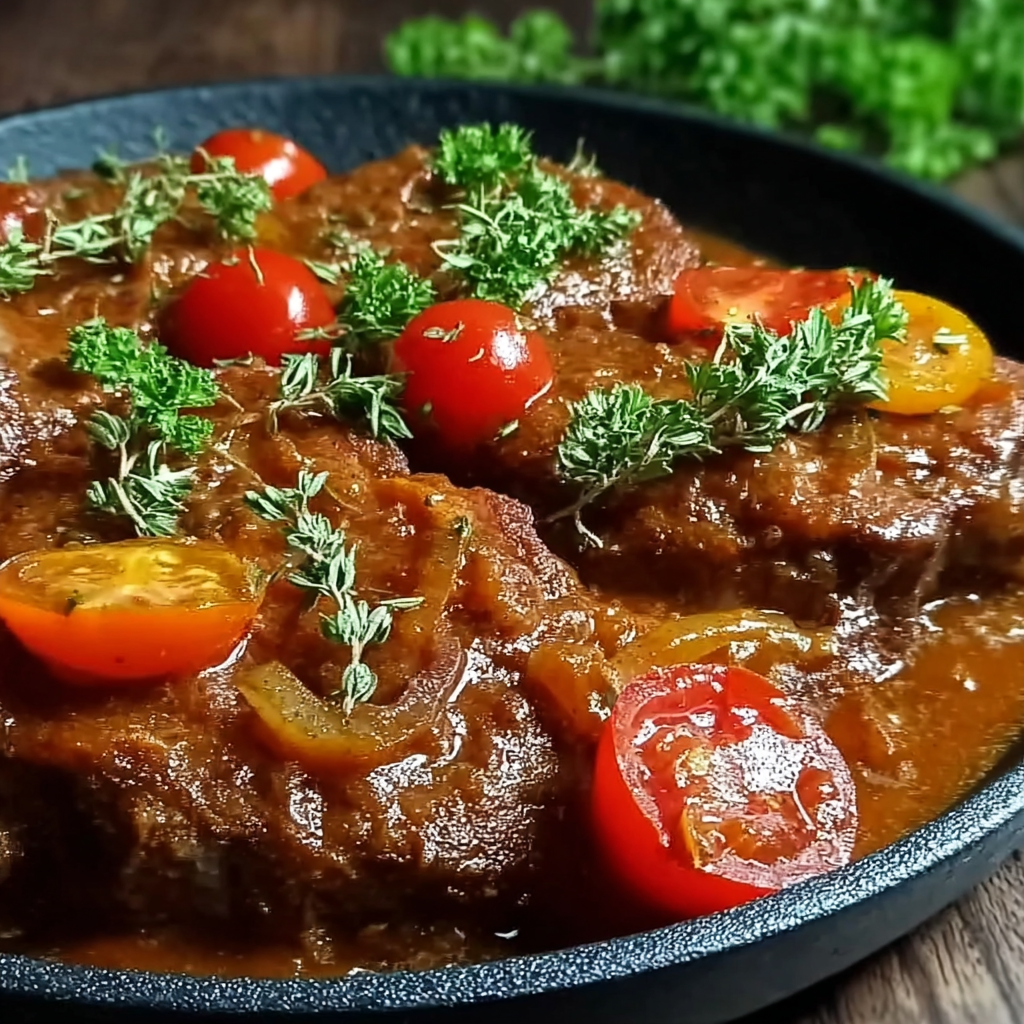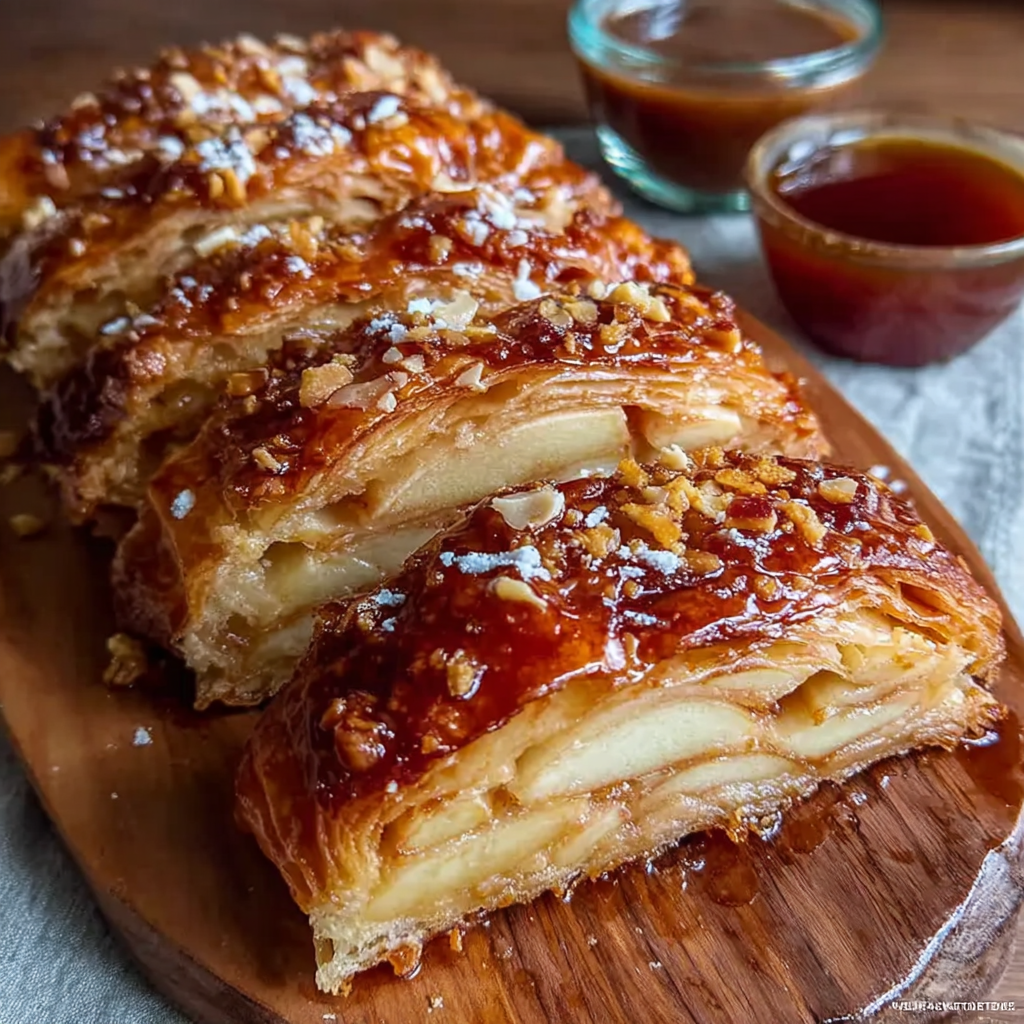Introduction
There's something undeniably comforting about a classic dish that transports us to simpler times. Old-fashioned Swiss steak is a prime example of such a recipe. This hearty meal combines tender beef with rich, savory gravy, bringing warmth and satisfaction to your table.
Whether it's a rainy day or a family gathering, this Swiss steak recipe is sure to impress. With its delightful flavors and melt-in-your-mouth texture, it’s a dish that encourages second helpings and shared moments around the dinner table.
Ingredients
- 2 lbs chuck steak
A well-marbled cut of meat that becomes incredibly tender when braised, chuck steak is ideal for Swiss steak, absorbing flavors and maintaining moisture. - 1/3 cup all-purpose flour
This coats the meat, helping to create a savory crust while also thickening the gravy during cooking. - Salt and pepper to taste
These basic seasonings enhance the natural flavors of the beef and other ingredients, ensuring the dish is well-balanced. - 3 tablespoons vegetable oil
Used for browning the steak, the oil provides a high smoke point and adds depth of flavor to the dish. - 1 large onion, chopped
Onions lend a sweetness and aromatic base to the gravy, caramelizing beautifully during the cooking process. - 1 bell pepper, chopped
Adding color and extra flavor, bell peppers complement the beef and onion, creating a well-rounded taste. - 2 cloves garlic, minced
Garlic elevates the flavor profile, adding a robust aroma that permeates the dish. - 1 can (14.5 oz) diced tomatoes with juice
Tomatoes bring acidity and moisture to the dish, balancing the richness of the gravy. - 1 cup beef broth
Broth serves as a flavorful base, keeping the beef moist and infusing it with rich umami notes. - 2 teaspoons Worcestershire sauce
This adds a tangy depth of flavor and enhances the overall taste of the dish, rounding out the gravy. - 1 teaspoon dried oregano
Herbs like oregano introduce an earthy aroma, contributing to the traditional flavor profile of old-fashioned Swiss steak. - 1 bay leaf
Bay leaves infuse the dish with complex flavors, enriching the sauce as it simmers.
Directions & Preparation
Step 1: Prepare the steak and coat with flour.
Start by cutting the chuck steak into serving-sized pieces. Generously season with salt and pepper, then coat each piece in flour. This not only helps in browning but also aids in creating a thicker gravy later on. Ensure each piece is well-covered for the best results.
Step 2: Brown the steak in a skillet.
Heat the vegetable oil in a large skillet over medium-high heat. Add the floured steak pieces, browning them on all sides. This caramelization develops deep flavors that will permeate the whole dish. Don't overcrowd the pan; do it in batches if necessary, allowing the meat to get that golden crust.
Step 3: Sauté the vegetables.
Once the steak is browned, remove it from the skillet and set it aside. In the same pan, add the chopped onion and bell pepper. Cook until the onions are translucent and the peppers are tender. This step builds a flavor base for your gravy, allowing the sweetness of the onions to shine through.
Step 4: Add garlic and tomatoes.
Stir in the minced garlic and diced tomatoes with their juices. Cook for a couple of minutes to soften the tomatoes. Garlic adds an aromatic depth, while the acidity from the tomatoes enhances the overall taste, ensuring a rich sauce.
Step 5: Combine the beef broth and seasonings.
Pour in the beef broth, followed by Worcestershire sauce, dried oregano, and the bay leaf. This mixture is essential for creating a flavorful gravy. Scrape the browned bits from the bottom of the pan, as they will enhance the sauce's richness and complexity.
Step 6: Return the steak to the skillet.
Carefully nestle the browned steak pieces back into the skillet. This allows the meat to soak up the flavors of the gravy as it cooks. Make sure the steak is mostly submerged; this ensures even cooking and enhanced tenderness.
Step 7: Simmer the dish.
Bring the mixture to a gentle simmer. Once bubbling, reduce the heat to low, cover the skillet, and let it cook slowly for about 1.5 to 2 hours. Slow cooking breaks down the tough fibers in the meat, making it tender and juicy, while allowing the flavors to meld beautifully.
Step 8: Check seasoning and serve.
Before serving, taste the sauce and adjust seasoning if necessary, adding more salt or pepper as desired. Remove the bay leaf. Serve the Swiss steak hot, typically over mashed potatoes or rice, as it pairs excellently with something to soak up that luscious gravy.

The Key to Perfectly Tender Meat
The secret to achieving perfectly tender Swiss steak lies in the slow cooking process. By allowing the meat to simmer for an extended period, the connective tissues break down, resulting in a melt-in-your-mouth texture. Be patient—giving the dish time to cook deeply enriches the flavor and tenderness of the meat.
Flavor Enhancements You Can Try
While the basic recipe is delightful, consider adding a splash of red wine to the gravy for added depth, or include mushrooms for an earthy dimension. Fresh herbs like thyme or parsley can also brighten the dish. These enhancements can elevate your Swiss steak to new gourmet heights, making your version unique.
Serving Suggestions That Shine
Swiss steak is versatile and pairs wonderfully with many sides. Classic options include creamy mashed potatoes or buttered noodles to soak up the rich gravy. For a healthier twist, steamed green beans or a crisp garden salad can add freshness and balance, making the meal well-rounded and satisfying.
FAQs
What if my gravy is too thin?
If your gravy comes out too thin, try simmering it uncovered for a short while to reduce and thicken. Alternatively, mix a tablespoon of flour with water to create a slurry, then stir it in gradually until you reach your desired consistency.
How can I make Swiss steak more flavorful?
To enhance the flavor, ensure you're seasoning the meat well before cooking. Adding a splash of red wine or incorporating extra herbs during the simmering phase can elevate the taste significantly.
Can I replace the chuck steak with another cut?
Yes, while chuck steak is preferred for its tenderness, you can use round steak or brisket. Just remember that different cuts may require slight adjustments in cooking time.
Why does my Swiss steak taste bland?
If the dish tastes bland, it may need more seasoning. Consider enhancing with more salt, pepper, or additional Worcestershire sauce to deepen the flavors.
Is it necessary to flour the meat before browning?
Flouring the meat is important as it helps to create a delicious crust and thickens the gravy once the liquid is added. Skipping this step may result in a thinner sauce.
What do I do if my steak is overcooked?
If your steak ends up overcooked, consider slicing it thinly against the grain and serving it in the gravy to help mask the dryness.
Conclusion
Old-fashioned Swiss steak is a timeless dish that invites comfort and warmth into your kitchen. It's not only an economical choice but also a soulful meal that brings together family and friends around the table.
With its rich flavors and tender texture, this classic recipe is one that you'll find yourself returning to time and again, continuing to create lasting memories with each delicious bite.
Recipe Card
Tender and Flavorful Old-Fashioned Swiss Steak
Ingredients
- 2 lbs chuck steak
- 1/3 cup all-purpose flour
- Salt and pepper to taste
- 3 tablespoons vegetable oil
- 1 large onion chopped
- 1 bell pepper chopped
- 2 cloves garlic minced
- 1 can 14.5 oz diced tomatoes with juice
- 1 cup beef broth
- 2 teaspoons Worcestershire sauce
- 1 teaspoon dried oregano
- 1 bay leaf
Instructions
- Prepare the steak and coat with flour.
- Brown the steak in a skillet.
- Sauté the vegetables.
- Add garlic and tomatoes.
- Combine the beef broth and seasonings.
- Return the steak to the skillet.
- Simmer the dish.
- Check seasoning and serve.
Notes
Additional serving suggestions: pair with a crisp salad, garlic bread, or roasted seasonal vegetables for balance.
For make-ahead, prep components separately and assemble just before heating to preserve texture.
Taste and adjust with acid (lemon/vinegar) and salt right at the end to wake up flavors.








